News and Recent Findings
Critique of the Cross-Lagged Panel Model
The cross-lagged panel model (CLPM) is a widely used technique for examining reciprocal causal effects using longitudinal data. Critics of the CLPM have noted that by failing to account for certain person-level associations, estimates of these causal effects can be biased. Because of this, models that incorporate stable-trait components (such as the random intercept cross-lagged panel model [RI-CLPM]) have become popular alternatives. Debates about the merits of the CLPM have continued, however, with some researchers arguing that the CLPM is more appropriate than modern alternatives for examining common psychological questions. In this paper, I discuss the ways that these defenses of the CLPM fail to acknowledge well-known limitations of the model. I propose some possible sources of confusion regarding these models, and I provide alternative ways of thinking about the problems with the CLPM. I then show in simulated data that with realistic assumptions, the CLPM is very likely to find spurious cross-lagged effects when they don't exist and can sometimes underestimate these effects when they do exist.
This paper is now in press at Advances in Methods and Practices in Psychological Science. The preprint is available on PsyArXiv.

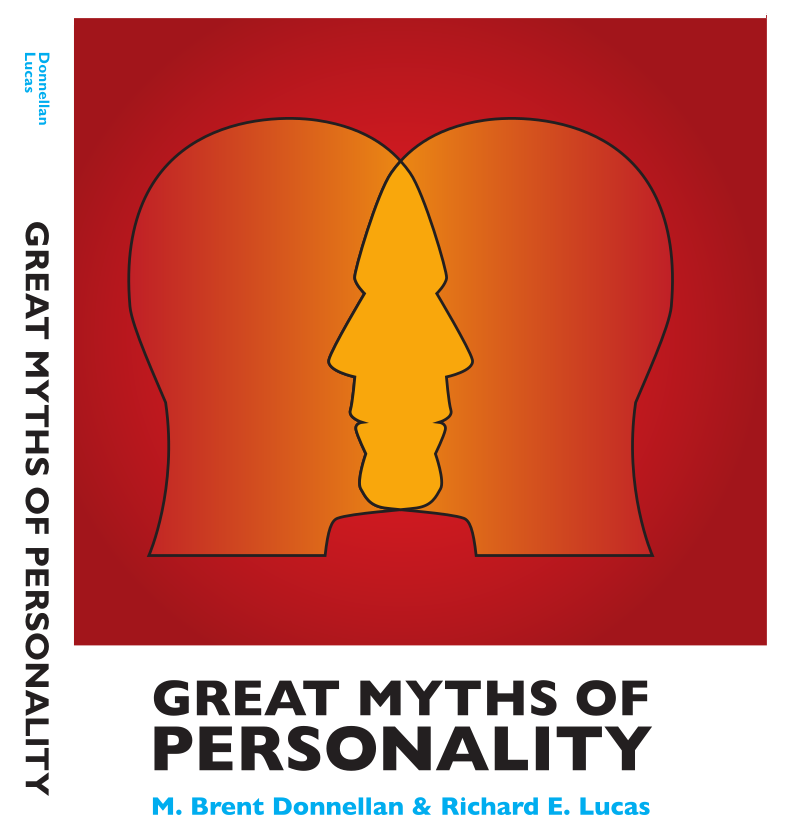
New Book Out Now
My book with Brent Donnellan on myths of personality is out now. This book describes and discusses evidence for a number of beliefs about personality, focusing on the extent to which these beliefs accurately reflect the evidence. In addressing these myths, we also cover basic principles in personality psychology, making Great Myths a useful resource for undergraduate personality classes. The book is available from Amazon.
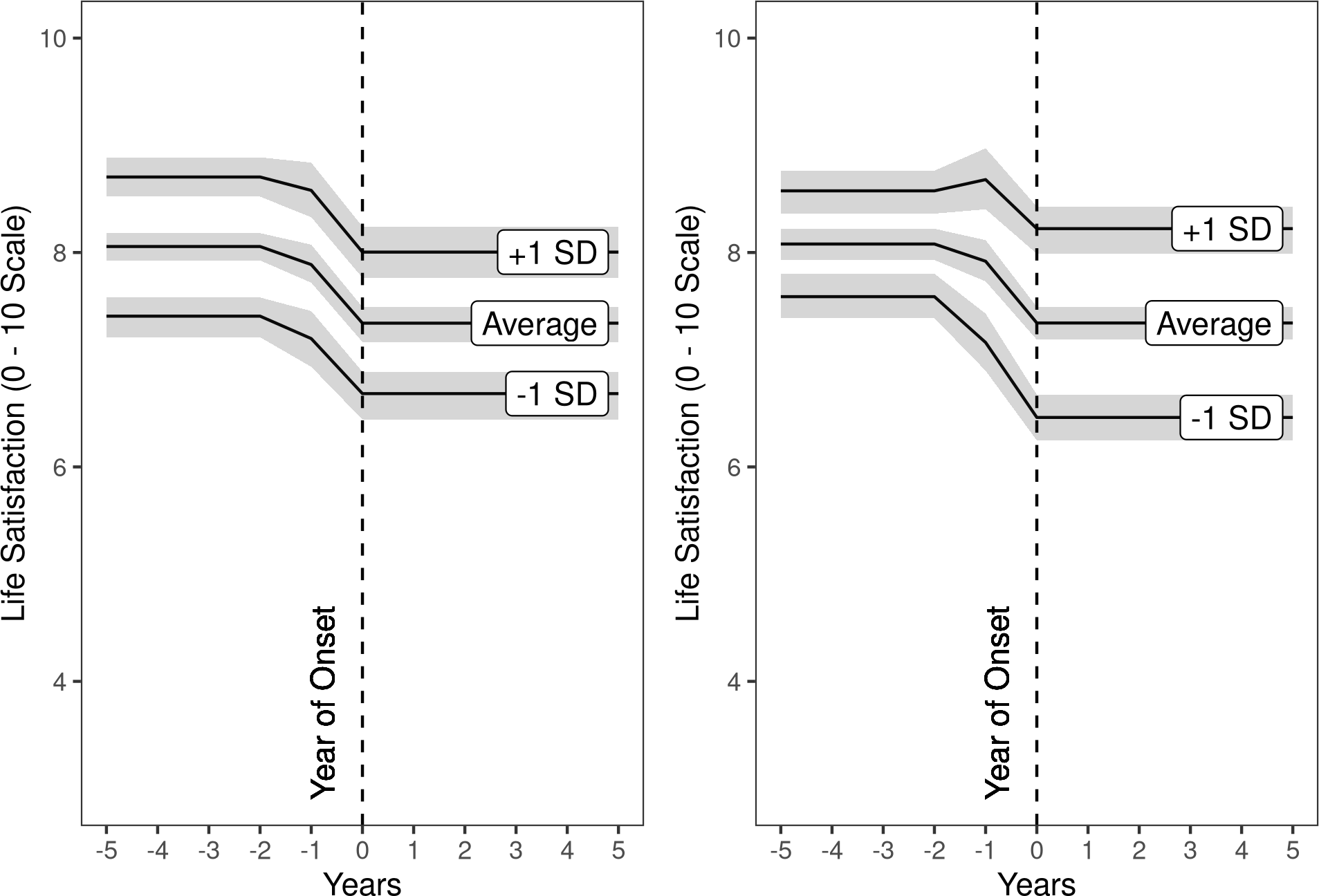
Social Support and Adaptation to Disability
Social support has been proposed to be a protective factor that buffers the losses that result from the experience of negative life events. The present study uses data from a large-scale Australian panel study (the Household, Income and Labour Dynamics in Australia study) to examine how life satisfaction changes following the onset of a disabling condition and then to test whether pre-event or post-event social support moderates reactions to this event. Results show that the onset of a disabling condition is associated with a large decline in life satisfaction but these changes are not moderated by pre-event social support. Post-event social support does moderate change in response to the onset of a disability, but ambiguities in the interpretation of this association must be considered. This paper is forthcoming in Social Psychological and Personality Science and a preprint is available on PsyArXiv.

Life Satisfaction in the U.S.
Where are the happiest places in the United States? Together with former MSU undergrad Nicole Lawless, we looked at differences in self-reported life satisfaction across counties in the U.S. We then examined the characteristics of those counties that predicted life satisfaction. The map above shows counties with high life satisfaction in darker blue, and counties with lower life satisfaction in lighter green (counties in white have no data). Click here for the paper, or request the paper here if you can't get access.
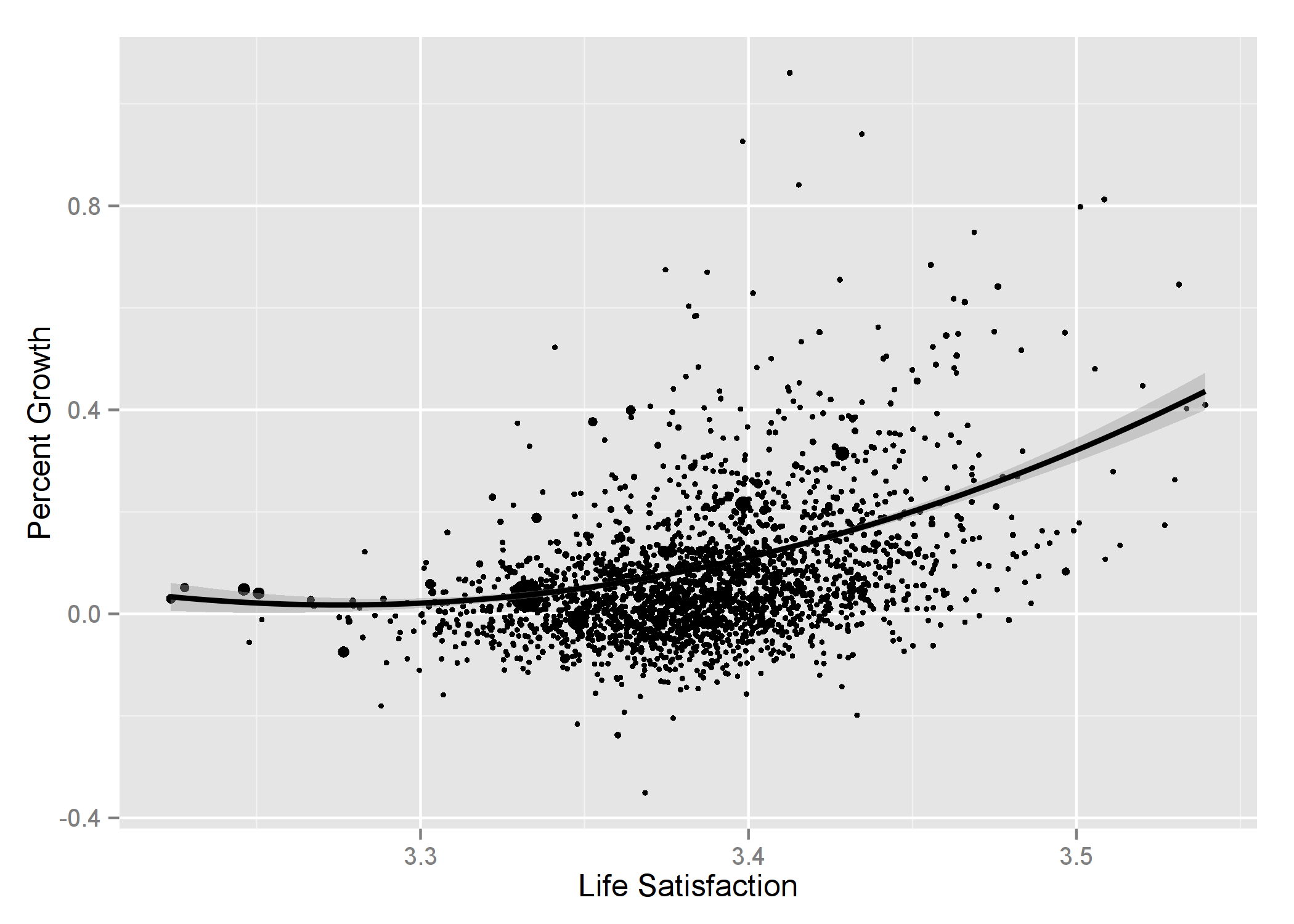
Happiness and Population Growth
Recently, there has been increased interest in using well-being measures to guide public policy. However, there are legitimate questions about the extent to which regional differences in well-being reflect real differences in quality of life. In this paper, we tested whether regional differences in life satisfaction predicted an important objective indicator of whether a region is doing well: the population growth in that region from 2000 to 2010. Our results show that there is a fairly strong association between the two, which suggests that self-reports of life satisfaction do tap something meaningful about a region. Click here for the paper, or request the paper here for the Pubmed version.
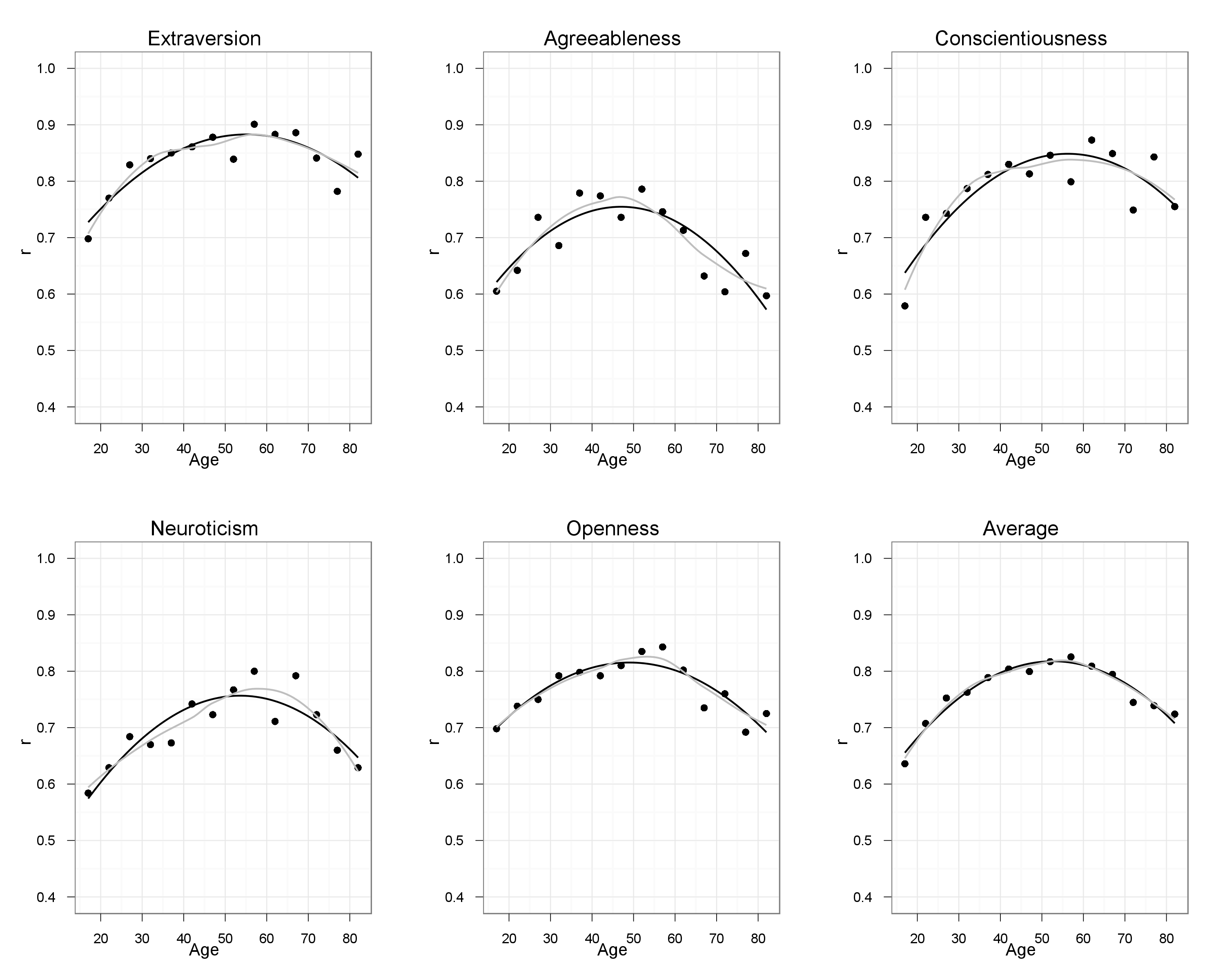
The Stability of Personality
How stable is personality, and does stability change over the life course? We used nationally representative data from the German SocioEconomic Panel Study to examine this question. The figure above shows the four-year stability of the Big Five personality traits for people of different ages. These figures clearly show that stability increases with age until about age 60, after which it declines. Click here for the paper, or request the paper here if you can't get access.
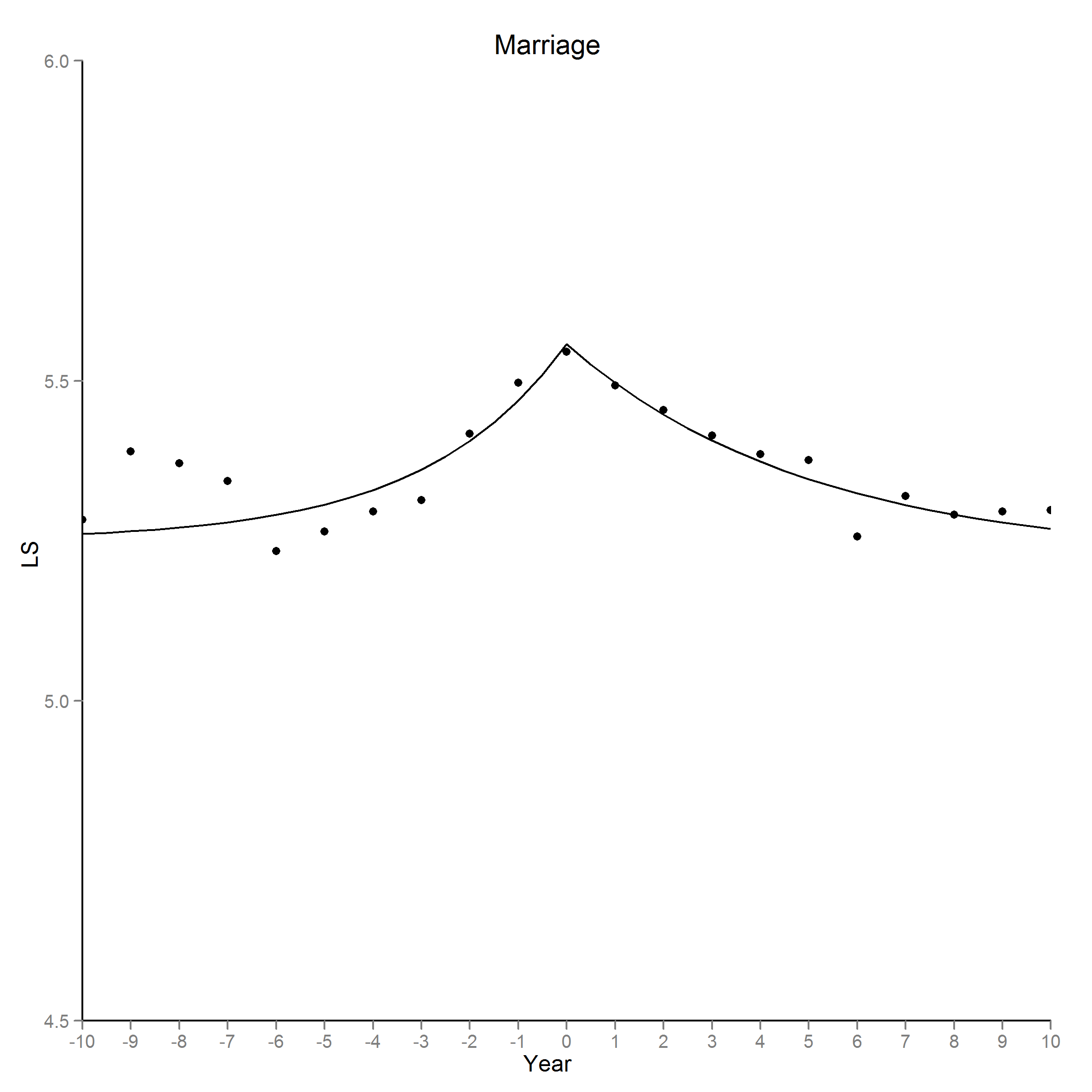

Life Satisfaction After Marriage
One major question that well-being researchers try to answer is whether major life events can have a permanent effect on subjective well-being. For years, psychologists assumed that the answer is "no" and that people inevitably adapt back to happines "set-points". In an early study, we found that soon after the event of marriage, people's levels of life satisfaction returned to the levels that they had been years before, a pattern that suggested complete adaptation. However, our early paper did not account for normative changes in life satisfaction that occur across the lifespan. In this follow-up paper, we use a different analytic technique to examine the extent to which people are happier than they would have been had they not married. Specifically, we compare life satisfaction trajectories for those who marry to a matched comparison group who never married. Our results suggest that even though people return to their original baseline levels, these levels are higher than they might have been had they not married. Click here for the paper, or request the paper here if you can't get access.